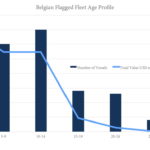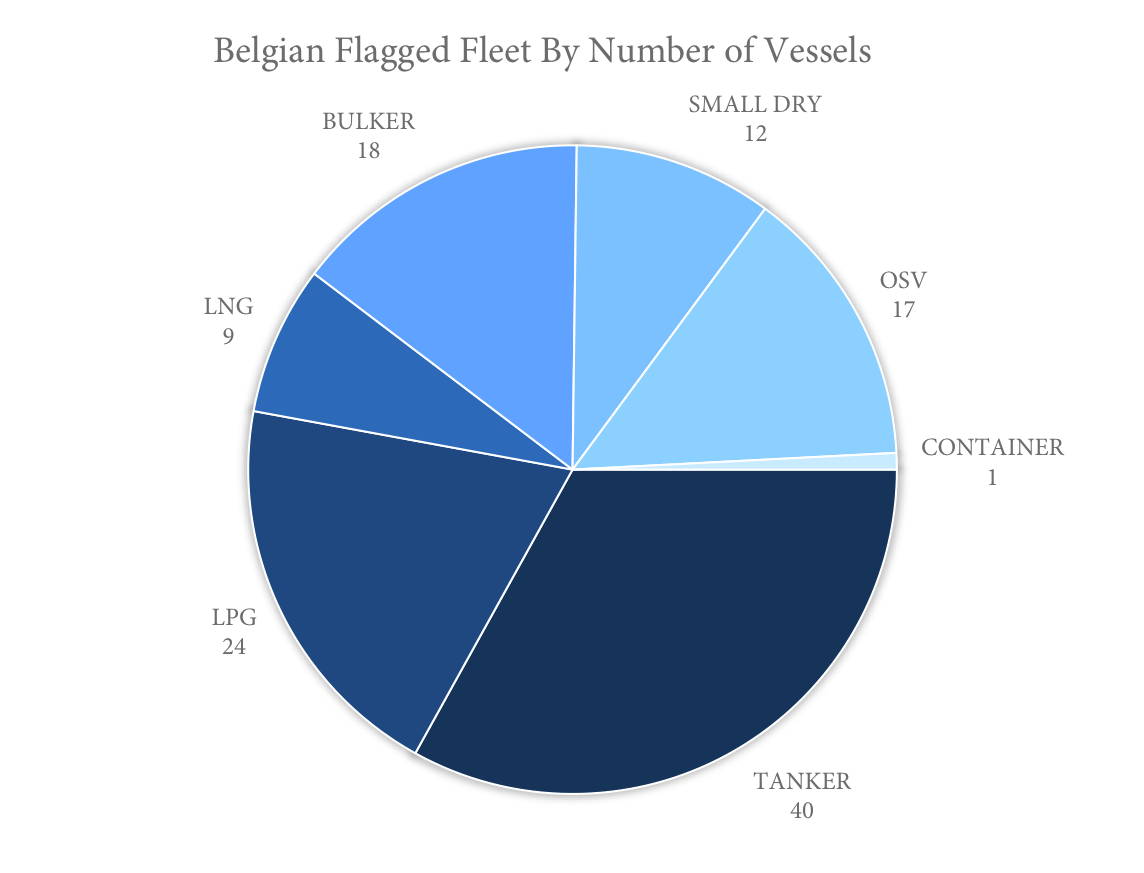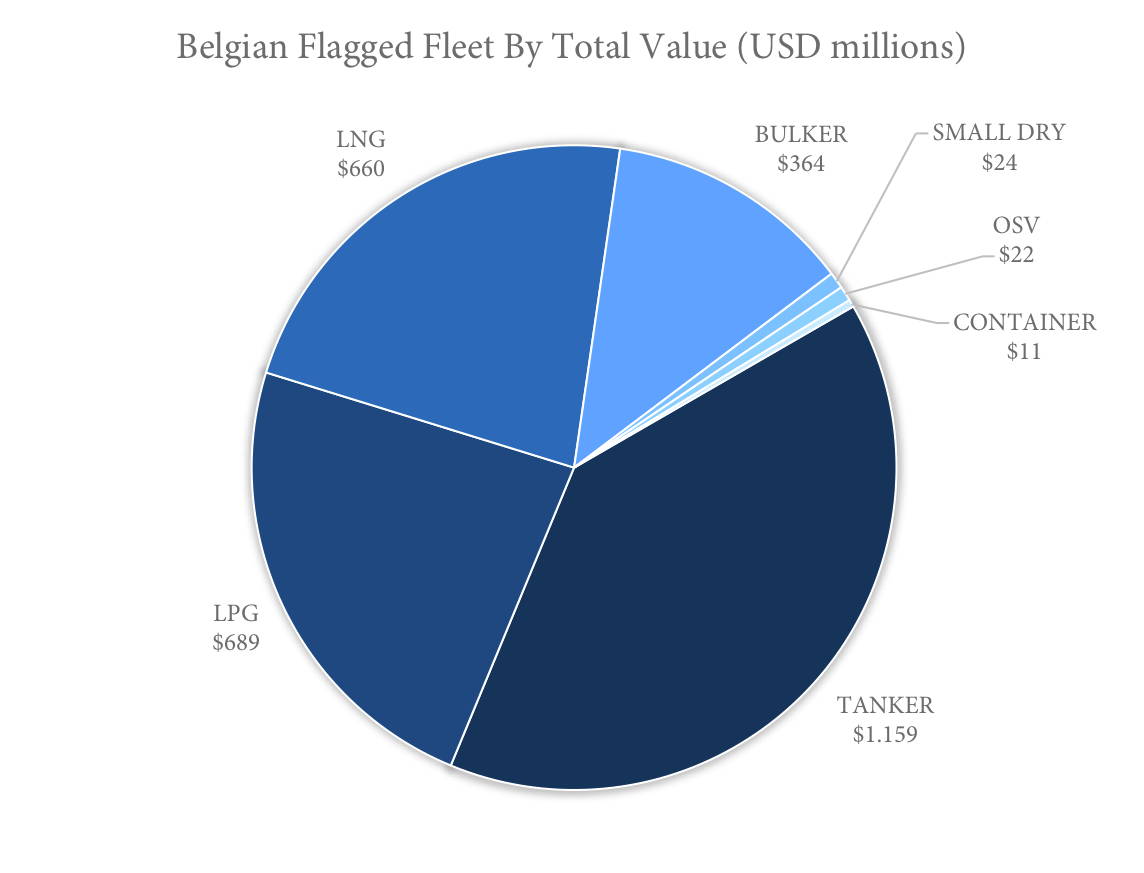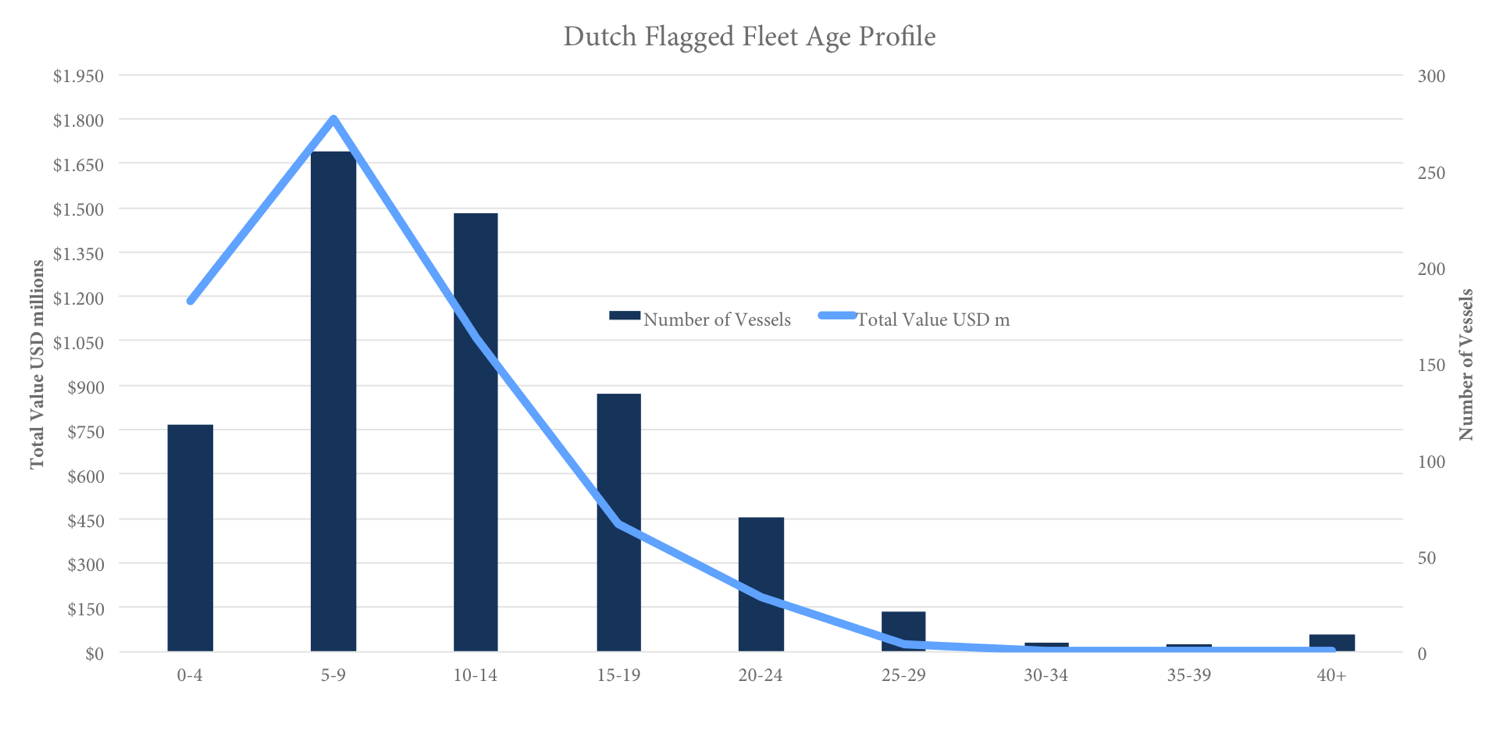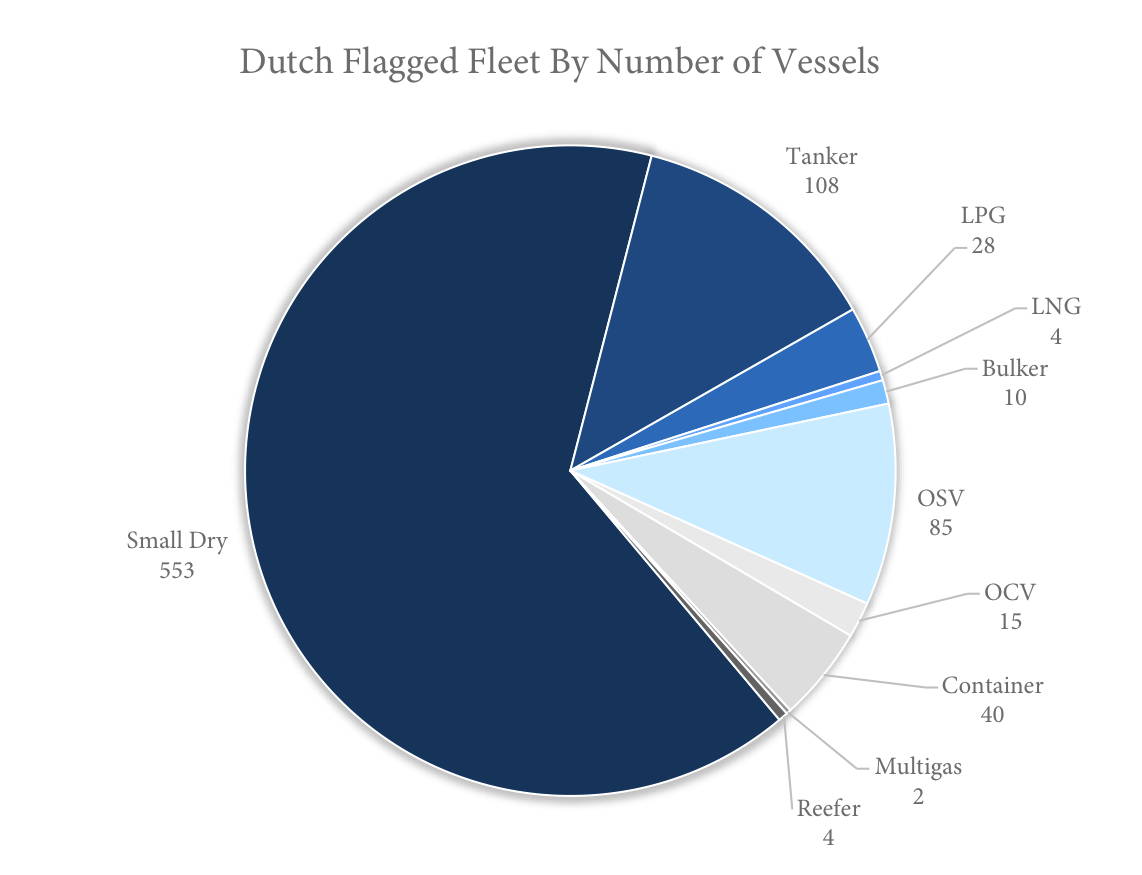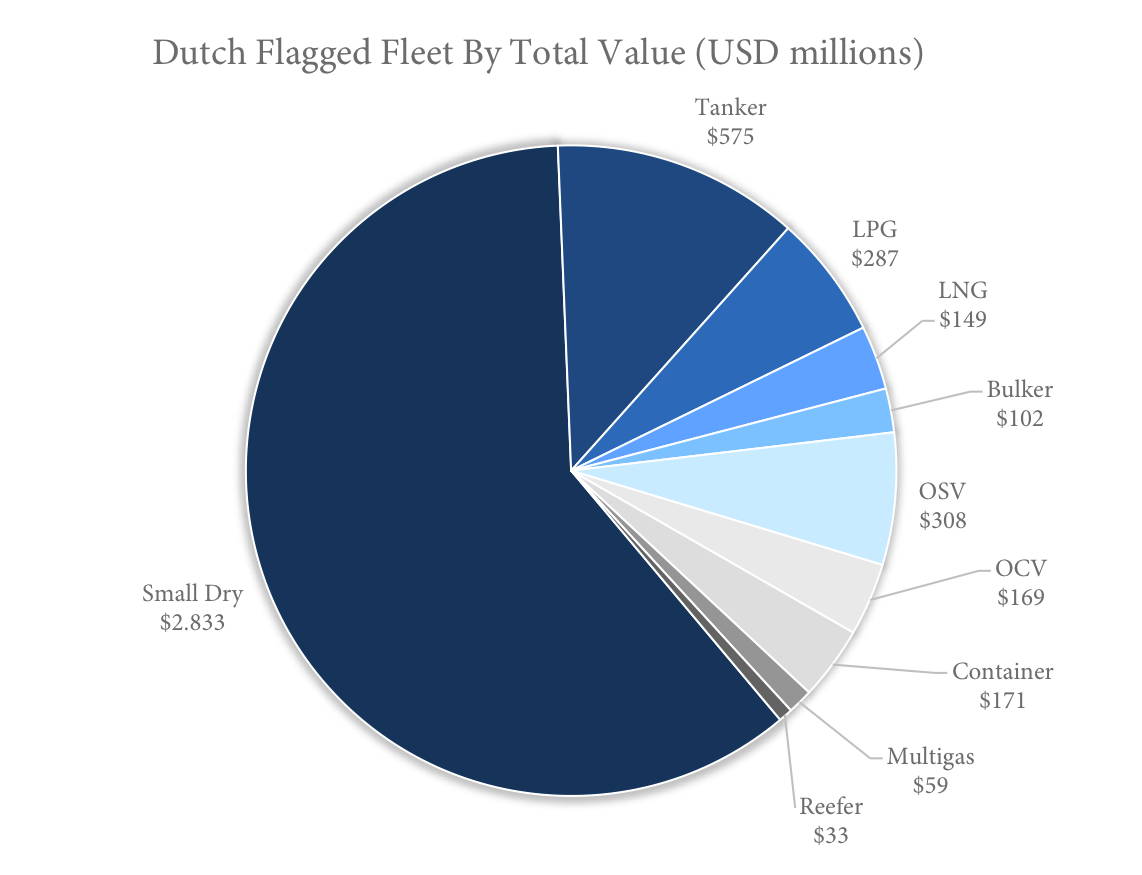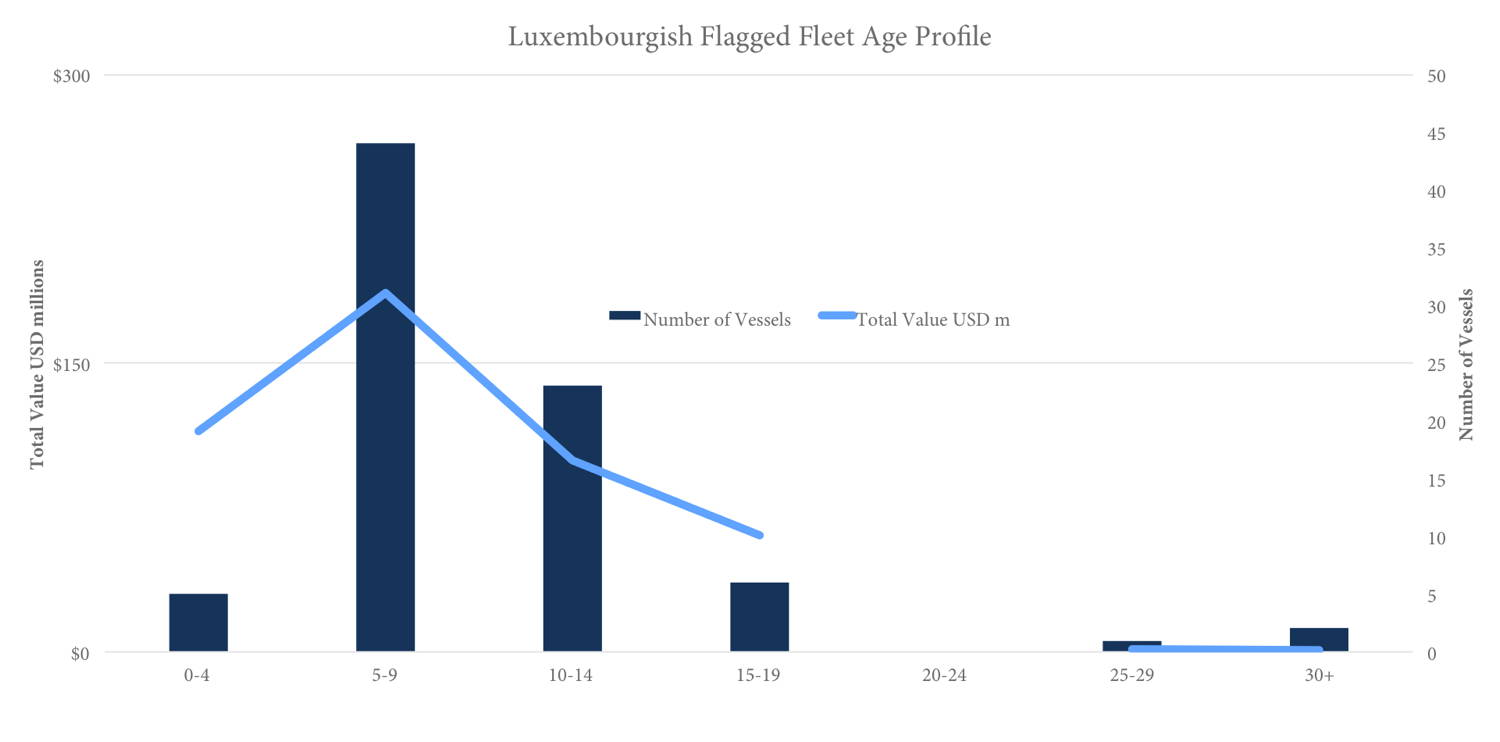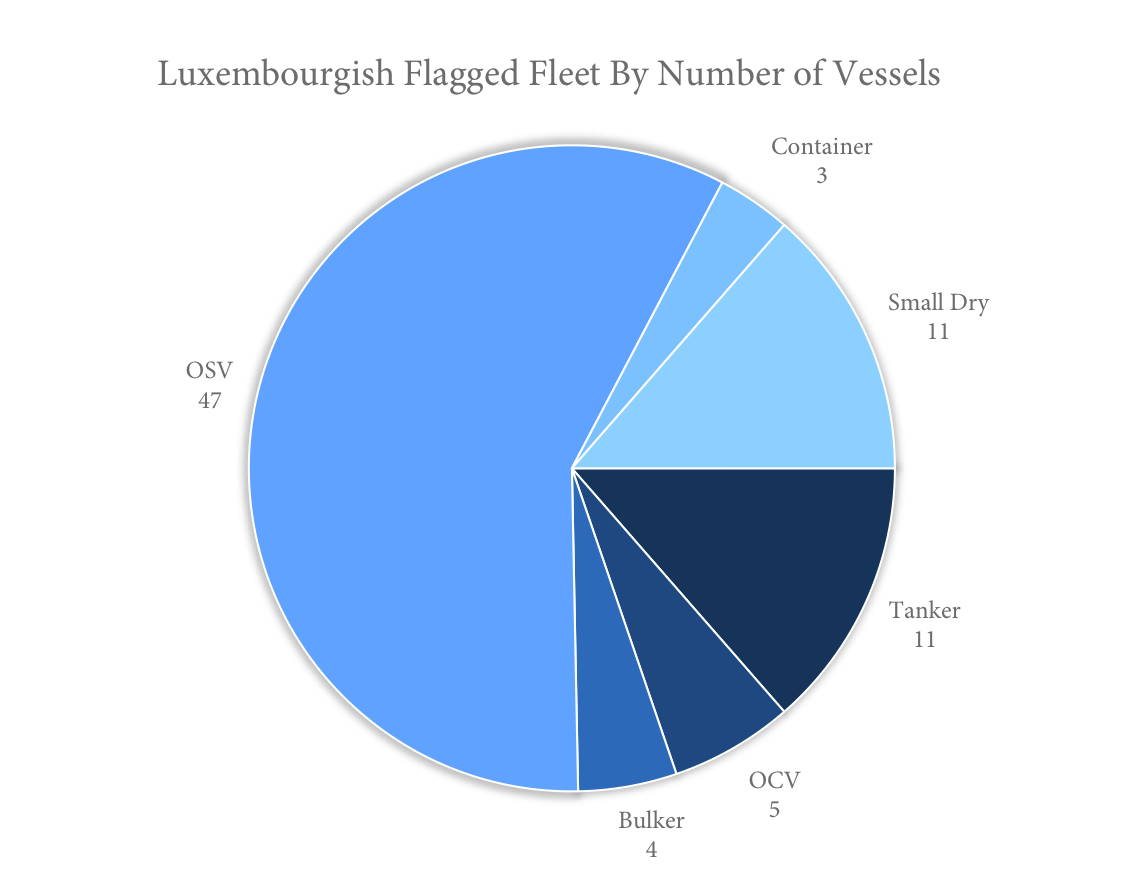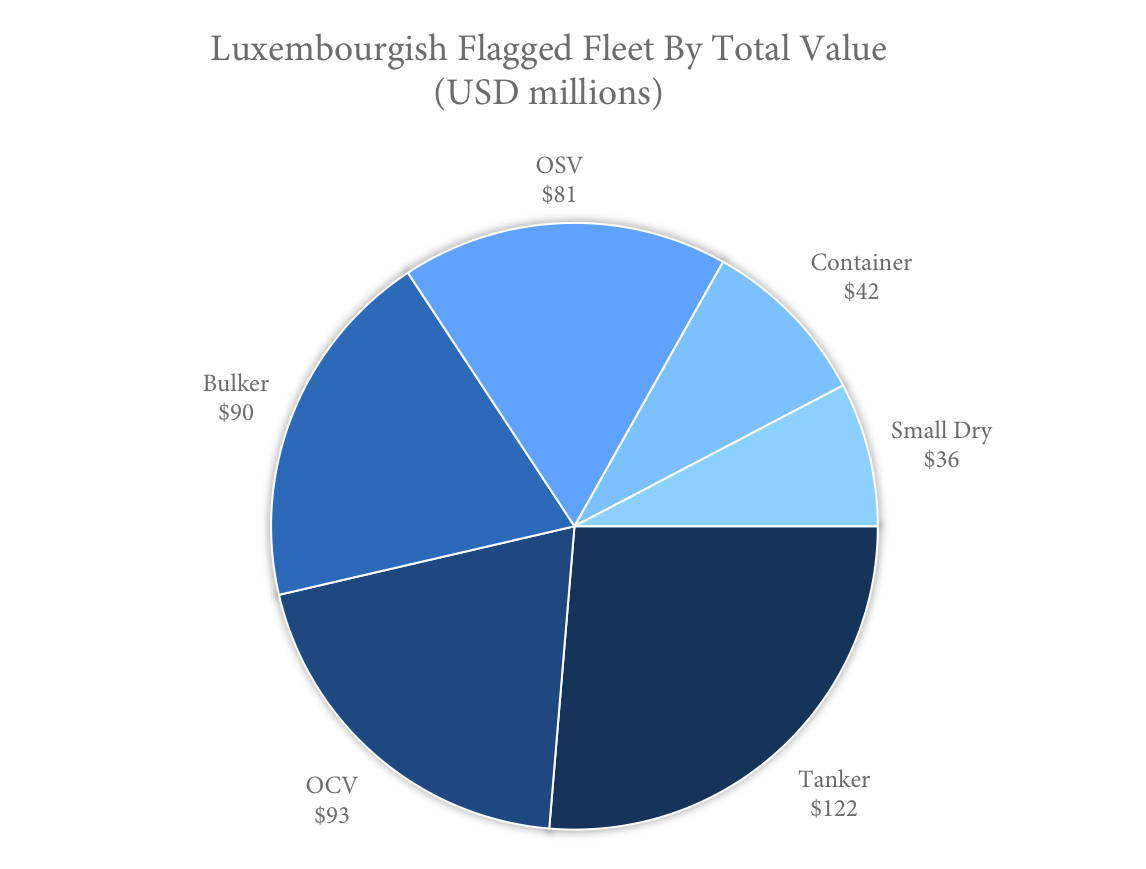The shipping industry is going to meet in Rotterdam for the Europort trade fair. It`s all about different maritime[ds_preview] segments, but what do the Dutch fleets look like? And what are the neighbours Belgium and Luxembourg doing? Tankers are certainly ranking high. In fact, the Belgian flagged fleet is dominated by tankers in terms of number of vessels (40 ships), followed by the LPG, bulker, OSV and small dry segments. While it is no surprise that tankers also make the most valuable part of the fleet at 1.150 bn $, the LNG segment comprising only nine ships is almost as valuable as the LPG fleet at four times the size. The majority of Belgian flagged ships is younger that 15 years. The age span between 0-5 years is also where most value is accumulated. In the much larger Dutch registry the ship profile is more diverse. The registry is dominated by the small dry segment (553) accounting for far more than half of all vessels, followed by tankers, OSVs and container ships. By value, the small dry segment is leading at 2.833 bn $, followed by tankers and OSVs. The Dutch fleet’s age profile is comparable to the Belgian one, however, most value lies in the 5-9 year range. OSVs (47 ships) make up more than half of the Luxembourgish flagged fleet, followed by tankers and small dry ships. Tankers, however, are the most valuable segment followed by OCVs, bunkers and OSVs. Most Luxembourgish flagged ships are between five and nine years of age.




